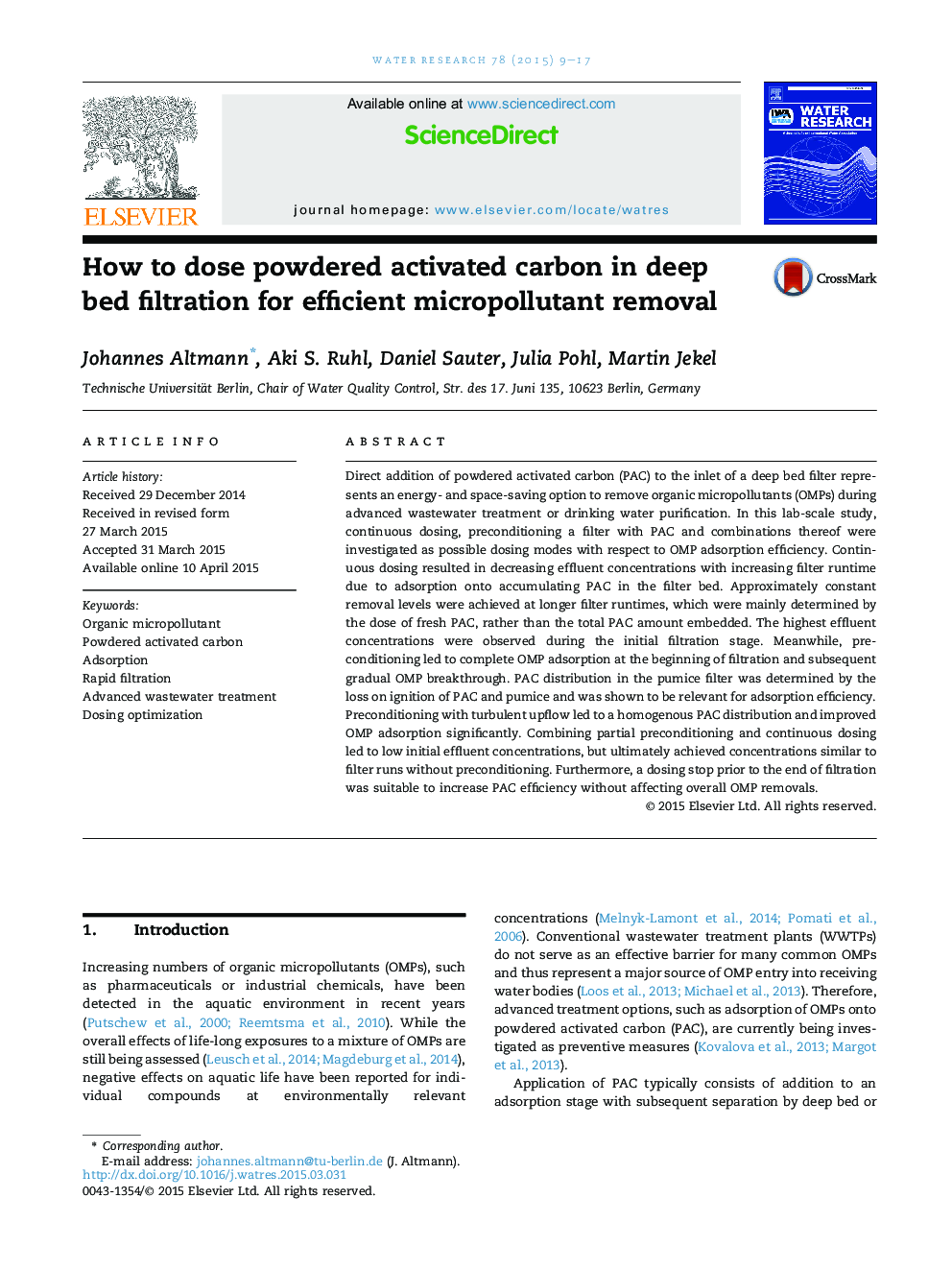| کد مقاله | کد نشریه | سال انتشار | مقاله انگلیسی | نسخه تمام متن |
|---|---|---|---|---|
| 4481111 | 1623090 | 2015 | 9 صفحه PDF | دانلود رایگان |
• Comparison of continuous PAC dosing and pulse addition to deep bed filtration.
• Dosing optimization by partial preconditioning and dosing stop were assessed.
• Continuous dosing: accumulating PAC improves OMP removal during filter run.
• Single-pulse: complete OMP removal at start of filtration and gradual breakthrough.
• Homogenous PAC distribution in the filter bed improves adsorption efficiency.
Direct addition of powdered activated carbon (PAC) to the inlet of a deep bed filter represents an energy- and space-saving option to remove organic micropollutants (OMPs) during advanced wastewater treatment or drinking water purification. In this lab-scale study, continuous dosing, preconditioning a filter with PAC and combinations thereof were investigated as possible dosing modes with respect to OMP adsorption efficiency. Continuous dosing resulted in decreasing effluent concentrations with increasing filter runtime due to adsorption onto accumulating PAC in the filter bed. Approximately constant removal levels were achieved at longer filter runtimes, which were mainly determined by the dose of fresh PAC, rather than the total PAC amount embedded. The highest effluent concentrations were observed during the initial filtration stage. Meanwhile, preconditioning led to complete OMP adsorption at the beginning of filtration and subsequent gradual OMP breakthrough. PAC distribution in the pumice filter was determined by the loss on ignition of PAC and pumice and was shown to be relevant for adsorption efficiency. Preconditioning with turbulent upflow led to a homogenous PAC distribution and improved OMP adsorption significantly. Combining partial preconditioning and continuous dosing led to low initial effluent concentrations, but ultimately achieved concentrations similar to filter runs without preconditioning. Furthermore, a dosing stop prior to the end of filtration was suitable to increase PAC efficiency without affecting overall OMP removals.
Figure optionsDownload high-quality image (210 K)Download as PowerPoint slide
Journal: Water Research - Volume 78, 1 July 2015, Pages 9–17
